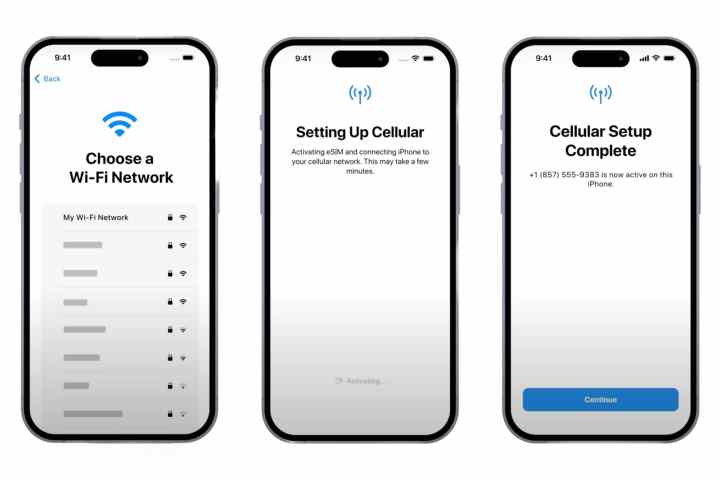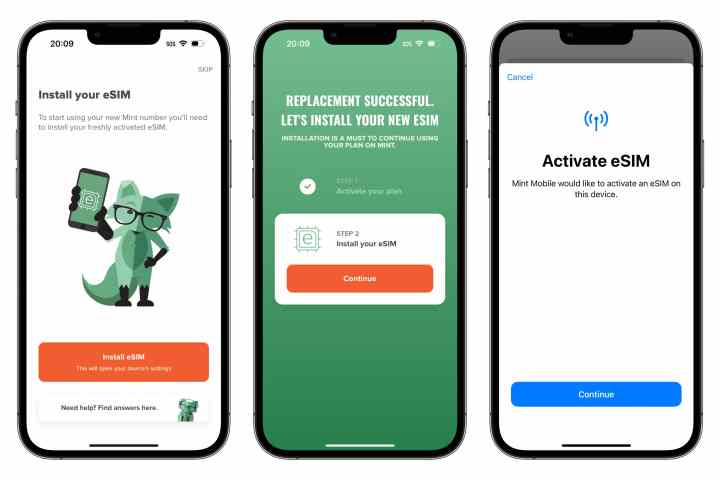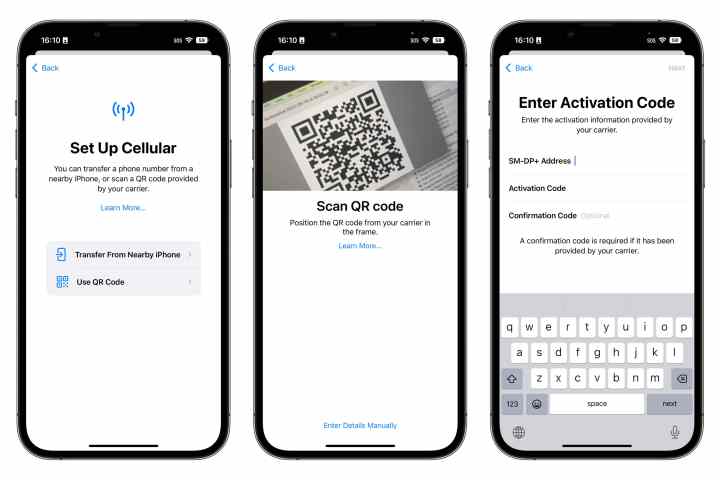How to transfer your SIM from an Android phone to iPhone 14
With Apple moving to an eSIM-only configuration in this year’s iPhone 14 range, it seems like things have become more complicated for people looking to switch from another smartphone platform. Finally, you can’t swap your SIM card from your old phone to your iPhone 14 because there’s nowhere left to put it – at least for US iPhone 14 models.
However, the good news is that this is not as complicated as it sounds. Although Apple has worked with carriers to provide a very smooth transition for your physical SIM card or eSIM from an older iPhone model, it’s still easy to get started with an eSIM, even if you’re coming from another platform like Android .
While Apple’s decision to move exclusively to eSIM is currently attracting the most attention, it’s important to remember that eSIM is not a proprietary Apple technology. Many Android phones released in recent years also support eSIM, including those from Google, Samsung, Oppo, Huawei and more.
Unfortunately, methods like Apple’s eSIM Quick Transfer are proprietary, which means you can’t move your eSIM from Android to iPhone as seamlessly as you can from iPhone to iPhone. Instead, you have to rely on the options offered by your carrier.
How to activate an eSIM with eSIM carrier activation
If you bought your iPhone 14 from a carrier that supports Apple’s eSIM carrier activation, there’s a good chance it’ll be ready to go, no matter what platform you’re coming from. This is similar to how most carriers have previously shipped a new SIM card to use with your new iPhone, with a quick process to activate the new SIM card and deactivate the old one.
US wireless carriers supporting Apple’s Carrier Activation feature include AT&T, Verizon, and T-Mobile, as well as Boost Mobile, Cellcom, Credo Mobile, C Spire, FirstNet, H2O Wireless, Spectrum Mobile, Straight Talk, Strata, Tracfone, US Cellular and Xfinity Mobile.
With eSIM carrier activation, your iPhone 14 is pre-assigned to your carrier’s network based on its IMEI and other internal device identifiers. When you set up your iPhone 14 for the first time, it downloads the information it needs to configure the eSIM for your account. You just need to make sure your iPhone is connected to a Wi-Fi network during the setup process.
Step 1: Swipe up from the top Warm welcome Screen to start setting up your new iPhone 14.
Step 2: If prompted, select a Wi-Fi network to connect to and enter the Wi-Fi password.

Apple
Step 3: Wait for the iPhone 14 activation process to complete.
Step 4: When a Choose a cellular plan screen appears, select the plan associated with your eSIM, then select Continue.
Step 5: Choose Continue if the Cellular setup completed message appears.
Mobile operators that support eSIM carrier activation can also configure your eSIM remotely. If your eSIM doesn’t mount automatically during the initial setup, either because it wasn’t set up correctly or you bought it from Apple or another retailer, you can call customer support and ask them to set it up for you.
In this case, complete the setup of your iPhone. Once your carrier provides your eSIM on their site and it’s ready to use, you’ll get a notification that says Carrier cellular plan ready to install. Select that and follow the prompts to accept your new plan.
How to transfer your eSIM using a mobile operator’s app
Many mobile apps provided by carriers to manage your account also offer ways to transfer a physical SIM or eSIM card from another phone to the new eSIM card in your iPhone 14.
The method for doing this depends on the carrier and app you’re using, but they all have one thing in common: you can’t configure your eSIM during the initial setup process. Instead, you’ll need to set up your iPhone 14 over a Wi-Fi connection, skip the eSIM setup, and then download and use your carrier’s app once everything else is up and running.
Step 1: Swipe up from the top Warm welcome Screen to start setting up your new iPhone 14.
Step 2: Continue with the setup process until you reach that Set up cellular Screen.
Step 3: Choose Set up later in settings.

Andrew Martonik / Digital Trends
Step 4: Finish setting up your iPhone. After completing the setup process and arriving at your home screen, download your carrier’s app from the App Store and follow the instructions to To install or transfer Your eSIM from your old phone.
How to transfer your eSIM with a QR code
If your carrier supports it, you can also configure your eSIM during the initial setup by scanning a QR code. This code is provided by your carrier and may be mailed to you, made available at a retail store, or viewed in your customer account on the carrier’s website.
The advantage of this method over using a mobile app is that you can scan this QR code when setting up your iPhone 14 and get started right away.
Step 1: Swipe up from the top Warm welcome Screen to start setting up your new iPhone 14.
Step 2: Follow the setup process until you reach that Set up cellular Screen.
Step 3: Choose Use QR code.

Jesse Hollington / Digital Trends
Step 4: Follow the instructions to point your iPhone camera at the QR code. You can do this with a printed code or directly from a second screen, e.g. B. from your old phone, a tablet or a computer.
Step 5: If you can’t scan the QR code or your carrier provides you with manual activation codes instead, select Enter details manually and on the next screen, enter the activation information provided by your wireless service provider.
Step 6: Wait for the iPhone 14 eSIM activation process to complete.
Step 7: Choose Continue if the Cellular setup completed message appears.
The steps above are designed to help you switch your main line from a physical SIM or eSIM card on your Android smartphone to an eSIM card on your new iPhone 14. However, if in doubt, we strongly recommend that you ask your mobile operator for help. There are 40 carriers in the US that support eSIM, and each may have a slightly different method of deploying an eSIM, especially those that don’t use Apple’s eSIM carrier activation feature.
Note that the iPhone 14 has two eSIM cards, so you can support two phone lines at the same time. While you can only move your primary line during initial setup, you can later move or configure a second line via the Settings app. For more information, see our guide to setting up and using a second line on an iPhone with eSIM.
Editor’s Recommendations